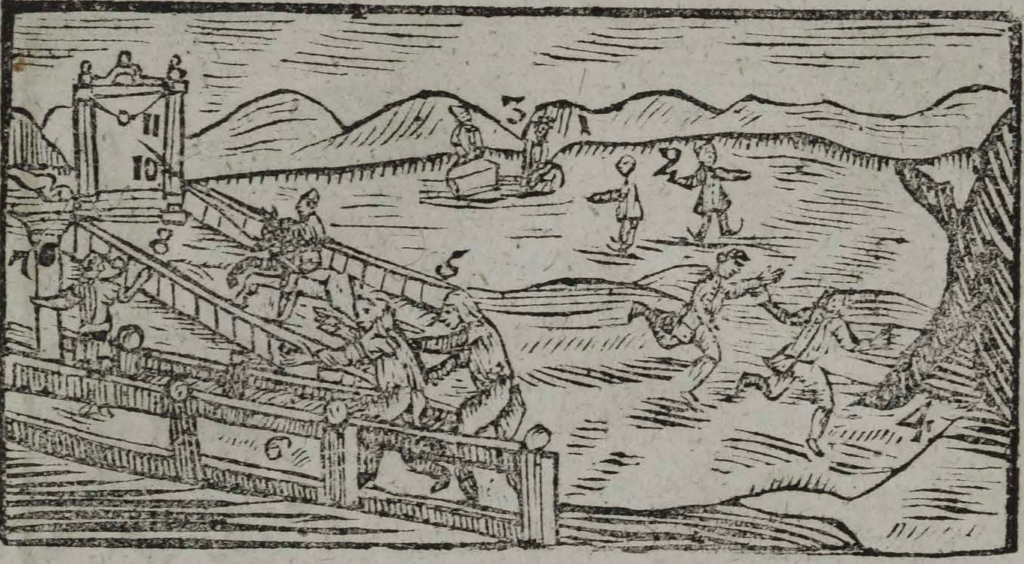Comparing what a few editions of Comenius have to say about skating is interesting. Each edition includes Latin and one or more other languages. Let’s start with a later Swedish one.

Pueri exercent se cursu, sive super glaciem 1 diabāthris 2, ubi etiam vehuntur trabis 3
Gossar öfwa sig antingen på isen 1 med skridskor 2, där de ock åka på kälkar 3
Les enfans s’exercent à courir ou sur la glace 1 avec des patens 2, ou à se aussi tirer dans des traineaux 3
(Boys exercise themselves on the ice (1) with skates (2), there they also ride on sleds (3).)
Johannes Amos Comenius’s Orbis sensualium pictus (1775 reprint), no. 136. The English translation is mine.
The 1775 edition is pretty basic. It calls skates diabāthris in Latin, skridskor in Swedish, and patens in French. The text matches German edition from 1669, which says that they ran on the ice with Schlittschuhen (diabáthris in Latin) (p. 279). The English version from 1729 has the boys running in “Scrick Shoes” (diabatris in Latin) (p. 171).
An older Swedish version has a different picture (though it’s the same as the picture in the German & English versions I checked) and adds another skating option.

Pueri exercent se cursu sive super glaciem 1 diabatbris, 2 ubi etiam vehuntur trahis; 3
Gossar öfwa sig i löpande antingen vppå Iisen 1 medh skrikskoor/2 ijsläggior hwarestthe oc åka på kålkar: 3
(Boys exercise themselves by running on the ice (1) with skates/ice-legs where they also ride on sleds (3))
Johannes Amos Comenius’s Orbis sensualium pictus (1689 reprint), p. 281. The English translation is mine.

In this one, the word for (metal-bladed) skates is skrikskoor. The word for bone skates, isläggior, is also used. The boys played on both, apparently. But the bone skates are stuck in at the side, where there’s just barely enough space to fit them.
It seems like this version of the book was aimed more at country people; skriksko is a dialectal variant of skridsko in Swedish, and bone skates remained in use in rural areas for much longer than they did in the cities.
